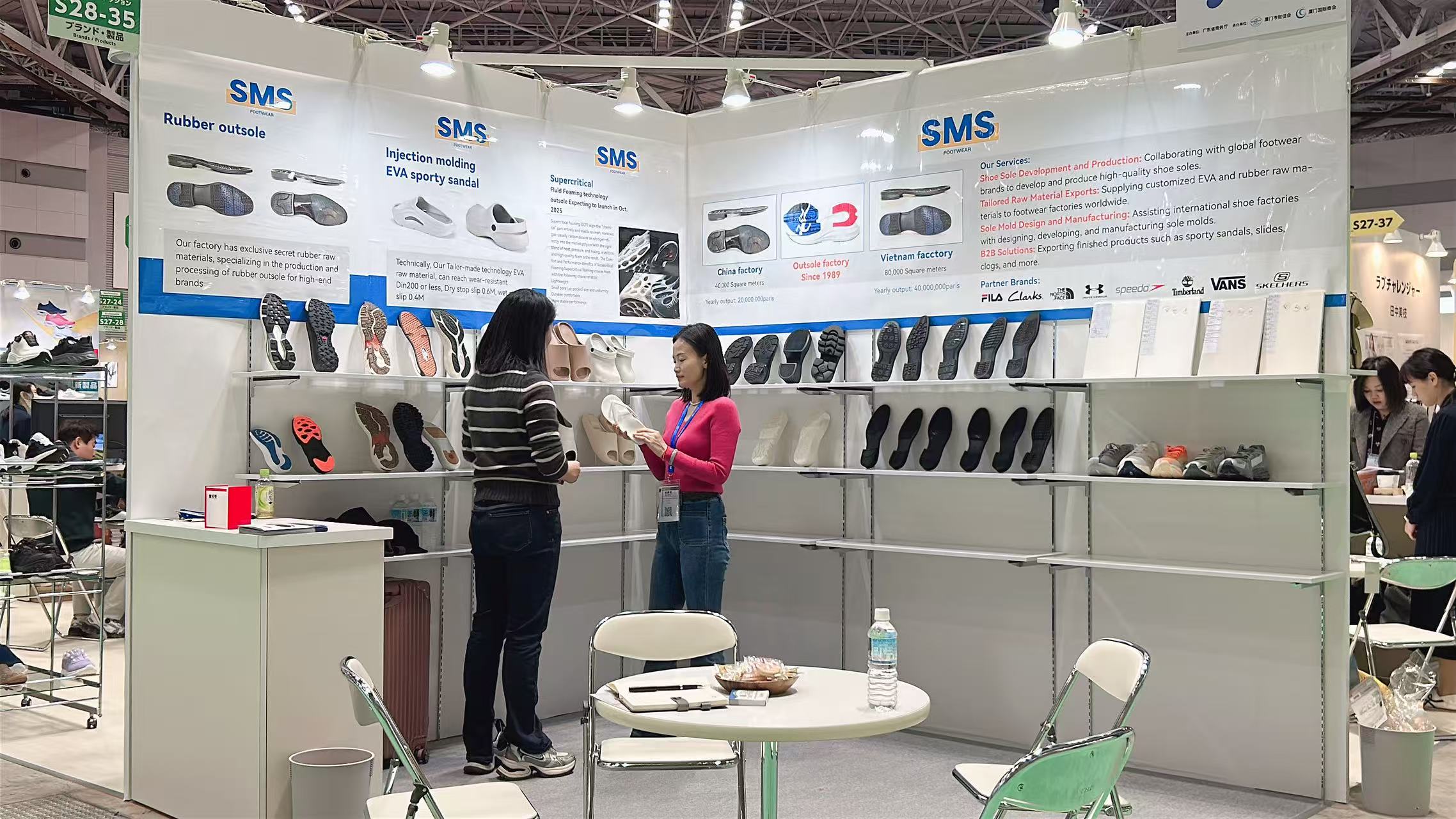
The 2025 FaW Tokyo Fashion Show once again solidified Japan’s position as a global leader in footwear innovation. This year’s event showcased groundbreaking advancements in soles, sandals, slides, and flip-flops, with a strong emphasis on material science, sustainability, and wearability. From supercritical foam soles to bio-engineered textiles, the exhibition revealed where the industry is heading—and how Japanese brands are setting the pace.
In this in-depth analysis, we’ll explore:
The Rise of Supercritical Foam Soles
Sandals & Slides: Modularity, Sustainability, and High-Tech Upgrades
Flip-Flops Reimagined: From Beachwear to Luxury Streetwear
Material Innovations: Algae-Based EVA, Recycled Rubber, and Beyond
Japan’s Footwear Industry: Tradition Meets Cutting-Edge Technology
One of the most significant trends at FaW Tokyo was the widespread adoption of supercritical foam technology in midsoles. Originally popularized by running shoes, this material has now expanded into casual footwear, sandals, and even flip-flops.
Lighter Weight: By using CO2 or nitrogen infusion during production, brands achieve ultra-light yet responsive cushioning.
Energy Return: Unlike traditional EVA, supercritical foams (like PEBAX and TPU blends) offer 85%+ energy return, reducing fatigue.
Sustainability: Many Japanese manufacturers now use plant-based additives to reduce reliance on petroleum-based materials.
Asics: Showcased a new GEL-Kayano Hybrid with a supercritical midsole combined with 3D-printed lattice structures.
Mizuno: Introduced a bio-degradable supercritical foam made partially from sugarcane.
Onitsuka Tiger: Merged heritage styling with ultra-lightweight supercritical soles in their 2025 retro sneakers.
This shift signals a broader industry move toward performance-driven comfort in everyday footwear.
Gone are the days of simple rubber sandals—2025 is all about customization, eco-materials, and ergonomic design.
Suicoke debuted sandals with interchangeable straps, allowing wearers to switch between nylon webbing, vegan leather, and recycled polyester.
Teva presented a "click-in" footbed system, enabling users to swap insoles for different activities (hiking, city wear, recovery).
Algae-Based EVA: Brands like Keen and Chaco are replacing petroleum-based foams with algae-derived cushioning, reducing carbon footprints.
3D-Knitted Uppers: Companies like Salomon are using seamless knitting tech to minimize waste in sandal production.
Japanese brands are increasingly collaborating with podiatrists to create arch-supportive sandals. Dr. Scholl’s Japan introduced a slide with dynamic pressure distribution, targeting urban commuters.
Flip-flops are shedding their cheap, disposable image and entering the premium lifestyle category.
Woven Tech Straps: Brands like Havaianas x Y-3 showcased carbon-fiber-infused straps for durability and style.
Cork & Natural Rubber: Birkenstock’s Japan-exclusive line featured FSC-certified cork footbeds with antimicrobial treatments.
Yes, they exist now. Merrell’s Hydro Moc 2.0 uses supercritical foam for shock absorption, while Crocs’ new "Float" model is designed for water sports with quick-drying foam.
Japan has always been a pioneer in advanced material science, and this year’s show proved it.
Bloom Foam (used by Vivobarefoot) is made from algae harvested from polluted water, cleaning ecosystems while creating shoes.
Adidas x Parley displayed slides made from ocean plastic, but with improved flexibility via a new polymer blend.
Nike Air Soles now incorporate 20% recycled manufacturing waste, a step toward circular production.
Self-Repairing Rubber: A prototype from Mitsubishi Chemical can heal minor cracks when exposed to heat.
Temperature-Adaptive Foams: Under Armour Japan tested a sole that hardens in cold weather and softens in heat.
Japan’s footwear sector thrives on blending heritage craftsmanship with futuristic innovation.
✔ Precision Engineering: Brands like Asics and Mizuno invest heavily in biomechanics research.
✔ Sustainability Leadership: Japan is ahead in recycled and bio-based materials.
✔ Fusion of Fashion & Function: Labels like Visvim and Master-Piece merge artisanal techniques with tech.
Contact: Sales Dept
Phone: 0769-86293481
Tel: 0769-86293481
Email: sales@smstechindu.com
Add: B2B Office: Fl4 HuaGu Building 3, BaoTang Road, HengKeng, LiaoBu Town, Dongguan, China
We chat
